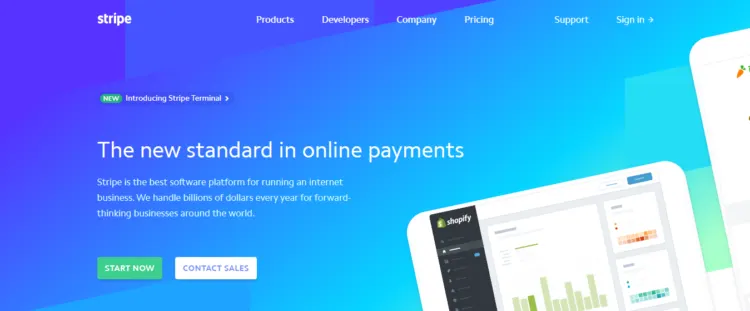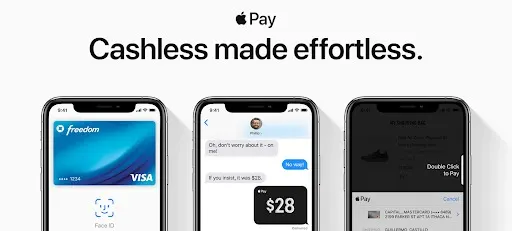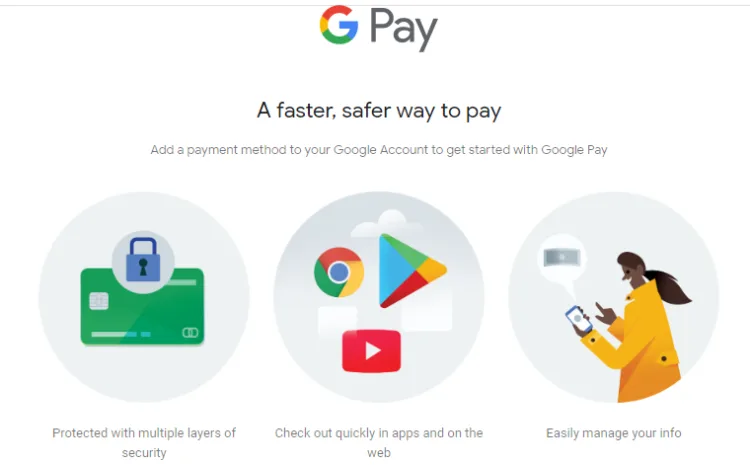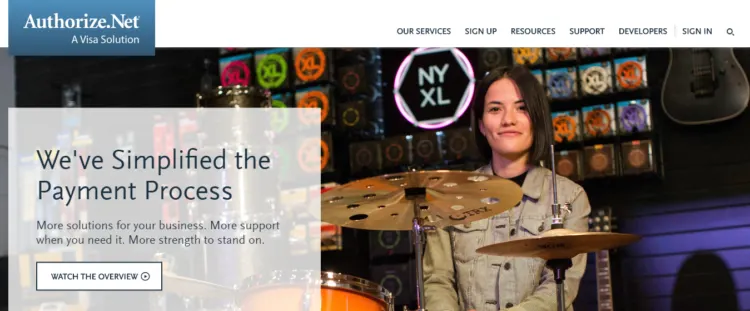Everything You Need to Know About WordPress Payment Processing
Maddy Osman


Everything You Need to Know About WordPress Payment Processing
Get The Print Version
Tired of scrolling? Download a PDF version for easier offline reading and sharing with coworkers.
A link to download the PDF will arrive in your inbox shortly.
Bringing in sales is important for any ecommerce store, but an aspect that’s often overlooked is how to bring the money in.
This involves choosing the best payment gateway for your needs.
Ecommerce transactions involve a series of steps that eventually lead to a completed checkout. Because customers can drop off at any stage for a number of reasons, you want to create the most seamless experience possible in order to encourage the customer to convert.
With this in mind, all of your efforts will ultimately be for naught if there’s a problem accepting a customer’s payment.
As such, if your payment process is too difficult or limiting, the customer might still abandon their cart at this point.
Among the top reasons why a customer abandons their shopping cart is because of concerns regarding payment security.
WordPress is one of the most popular platforms from which to build modern ecommerce stores.
Let’s dive deeper into the mechanics behind WordPress payment processing:
What’s Involved in an Online Payment Transaction?
There are three parties involved when processing online payments: the merchant, the customer, and the technology.
The merchant (you) accepts credit card payments. You need to partner with a merchant bank (also referred to as an acquirer) that accepts payments and deposits them into a merchant account (this is usually known as the payment processor).
The customer that initiates transactions online usually opts to settle their accounts using credit or debit cards. Specifically, according to Statista, 42% of online shoppers prefer to pay via credit card, 39% prefer to pay via electronic methods (Paypal included), and 28% prefer to pay using debit cards.
The technology includes the payment processor and the payment gateway.
WordPress Payment Processors vs. WordPress Payment Gateways: What’s the Difference?
There’s a very small distinction between a payment processor and payment gateway, but the line has been blurred as of late.
Previously, there was a need to select both a payment processor (also known as a merchant account) and a payment gateway. That’s not always the case nowadays.
1. What is a payment processor?
A payment processor is an intermediary who is responsible for processing transactions in bulk.
According to Elegant Themes, the payment processor is responsible for 4 things:
Handling relationships and managing risk between the credit card companies and your business.
Handling personal and financial data from customers.
Debiting a customer and crediting the business account (processing the transaction).
Transferring funds to your business bank account.
2. What is a payment gateway?
A payment gateway is a third-party tool that evaluates and processes customer payments. They exist to link the customer’s shopping cart to the processing network.
The parties involved in payment gateway transactions are your website, the customer, and the company that provides your merchant account.
Sometimes, the merchant account and gateway can be handled by the same company.
The major requirement for payment gateways is Payment Card Industry Data Security Standard (PCI DSS) compliance.
This involves a set of standards ensuring that all companies that accept, process, store, or transmit credit card information maintain a secure environment.
There are two main types of payment gateways:
Direct: A customer can complete a transaction directly on your website.
Redirect: A customer has to leave your website to make a payment. The customer is sent to an external page to process the payment.
The redirect option is better if your website’s security isn’t 100% ideal and you don’t want to be ultimately responsible for any lost or stolen information.
3. All-in-one providers.
There are some companies that offer both payment processing and payment gateway services, such as Beanstream.
There are also companies like Paypal and Stripe that eliminate the need for a dedicated merchant account.
In this article, we won’t be going into detail regarding how to setup or integrate payment processors, since there are several payment processing solutions that can bridge that gap for you.
How Online Transactions are Processed
There are two stages in payment processing: authorization (approving the sale) and settlement (getting the money into your account).
Here’s what involved with each one:
1. Approving the sale with authorization.
When a customer buys an item from your website using a credit or debit card, the information goes through a payment gateway, which encrypts the data to keep it private.
It is then sent to the payment processor, which sends a request to the issuing bank asking for money to pay for your items. The bank can grant or deny the request, depending on availability of funds (for debit cards) or if the customer’s credit limit was reached.
Amazingly, this whole process takes just 1-2 seconds to complete.
2. Settling the sale and getting the money to your account.
Once the transaction is approved, the card issuer sends money to the merchant, who deposits the money into your bank account.
Once the money hits your bank account, you can access the funds.
Sometimes, banks don’t allow you to access all the funds right away, in case you need to refund a customer later on.
The entire settlement process can take a few days.
Choosing Your Ideal WordPress Payment Processing Solution
Choosing a payment gateway isn’t as easy as it looks.
Depending on what you sell, where, you’ll be accepting payments from different parts of the world.
As such, you’ll have to consider different rules and restraints that affect WordPress payment processing.
Here are some questions to answer before choosing a payment gateway:
1. What type of payments do you accept?
Some brick-and-mortar stores only accept cash, but if you have an online store, a cash-only option is basically out of question.
Additionally, some retailers prefer debit over credit transactions.
Although both types of cards are processed by the same networks (VISA, MasterCard, Pulse, Interlink, etc.), this preference has to do with the fact that debit transactions usually have smaller transaction fees and shorter processing times.
Because of the higher transaction fees, some businesses usually require a minimum of $10 to process credit card purchases.
Another consideration: some ecommerce websites have started taking payments via Apple and Android Pay, as well as Venmo, on top of Paypal and regular credit cards.
This convenience eases some of the friction that happens if people otherwise have to dig out their physical cards to type in payment information.
One more thing: will you be charging one-time or continuous payments?
If you’ll be dealing with subscriptions, make sure that your WordPress payment processor can support this need.
2. What countries do you sell to?
Selling to multiple different countries often involves using different payment processors, so it is important to find processors that work with all of your target customers’ payment types.
In your search to find a WordPress payment processor, it’s also worth noting language and currency support, which will definitely matter to your customers.
It’s not enough that your customers are able to send payments, so also check for compatibility between your payment provider (processor and gateway) and bank.
A few good options are Webinterpret and EasyShip.
3. Can you ensure transaction security?
As mentioned previously, your ecommerce payment provider must be PCI-compliant, placing a premium on information protection and security.
4. Additional WordPress payment processing considerations.
Here are just a few more things to keep in mind:
Customer support. Because you’re dealing with money and personal information, it’s important that your concerns can be addressed quickly.
How fast the company settles. What good is making tons of sales if it takes your payment processor a long time to send you your money? Don’t forget that you’re still on the hook to pay suppliers and settle your other business expenses in a timely manner according to agreed-upon payment terms.
Fees. You’ll be shouldering the cost of payment processing, so it feels natural to try and default to a payment processor who’s offering the lowest fees. But remember, low fees aren’t everything. Consider what you’re getting for your fees; deciding on a payment processor should not come at the expense of good service or vital features.
Cross-device compatibility. People have become increasingly more dependent on their phones, using them for everything: including shopping and payment. If you want to convert all interested parties, it’s important to ensure that your payment processor works fine across different devices.
Securing Your Ecommerce Website
Besides choosing a payment provider that fits all of your criteria, you’ll also want to proactively secure your website in defense of people’s sensitive financial and personal information.
Here are some of the top methods to secure your ecommerce website:
1. Enable SSL encryption.
Move your website to HTTPS (the ‘S’ stands for ‘secure’). In order to do so, you’ll have to get an SSL certificate and install it on your website.
Besides making your site secure, having SSL can also contribute to SEO.
Additionally, Google warns users if they visit websites that don’t have SSL certificates (a conversion killer).
2. Secure user accounts.
Another way to secure your customer’s data is to encourage tighter practices for their user accounts.
Encrypting user accounts, encouraging customers to make stronger passwords, and even setting up a basic captcha for user logins can add an additional layer of security for your ecommerce business.
WordPress Payment Plugins
WordPress is known for its flexibility when it comes to creating websites for different purposes.
When building an ecommerce site on WordPress, you don’t have to build everything from scratch.
There are plenty of useful WordPress pay plugins available that already integrate every part of the ecommerce process, from shopping pages to payment methods.
Here are two of the best options:
1. BigCommerce for WordPress.
BigCommerce is one of the largest managed ecommerce platforms today, taking care of everything from customer support to payment integration. This backend system integrates with WordPress via the BigCommerce for WordPress plugin.
In terms of payment processing, the plugin offers some of the best credit card processing rates and over 65 payment integrations.
It is also PCI-compliant.
2. WooCommerce.
WooCommerce, an old standby for WordPress ecommerce functionality, offers several solutions for every payment method you might want to use: PayPal, Authorize.net, Square, and more.
Some of these WooCommerce payment gateways methods are free to add to your site, while the others require payment (on top of payment processing fees).
Top 7 WordPress Payments Processors
Depending on where you do business around the world, you may need to pick more than one WordPress payment processing service.
Here are some of the top options to choose from:
1. PayPal.

PayPal is arguably the most popular online payment channel today.
It is available in over 200 countries, can support 25 currencies, and is generally considered to be secure.
However, PayPal is known for charging very steep processing fees, especially for international transactions.
There are several WordPress plugins that offer PayPal integration.
The most popular one is the WooCommerce PayPal Checkout Payment Gateway, which currently has over 700,000 active installations and can be used to securely complete checkout for your products and subscriptions.
That said, using a SaaS solution plug in like BigCommerce comes already integrated with PayPal, PayPal Braintree and their suite of services with a click of a button.
2. Stripe.

Since its founding in 2010, Stripe has quickly risen to become one of the most popular payment processors.
Its success can probably be attributed to Stripe’s easy ecommerce integration and focus on security/anti-fraud measures.
Stripe transactions are handled on-site, which gives you more control over the checkout process.
Compared to PayPal, Stripe has lower transaction fees, especially for micropayments (amounts under $10). Additionally, money is transferred to your bank within two days, which eliminates the need to manually withdraw.
Of the available payment processors, Stripe is also known to be the most developer-friendly, allowing you to personalize your checkout page.
There is a plugin for Stripe integration with WordPress, offered by WooCommerce.
WooCommerce Stripe Payment Gateway has over 400,000 active installs.
Stripe also supports Apple Pay for both mobile and desktop transactions. Again, with a SaaS plugin like BigCommerce, you can connect to Stripe in a click of a button. You can also use Apple Pay, Amazon Pay, Venmo and a variety of other solutions which are already pre-built integrations.
The only caveat is that although Stripe accepts payments from anywhere in the world, it is only available for business use in 26 countries.
3. Apple Pay.

Apple Pay allows you to make cashless payments in person, via apps, and on the web.
It allows you to send and receive money from Messages and through Siri.
It is relatively secure, given that customers have to confirm payment using biometrically-driven Face or Touch ID.
When customers use Apple Pay, there’s no need to download an external app: you can use the cards you’ve associated with your Apple Wallet.
As a business, when you receive money, it is sent directly to your Apple Pay Cash card (which is in your Wallet). This balance is transferable to your bank account.
For merchants, Apple Pay is faster than using debit or credit cards (customers can checkout with just a touch), and is more secure on your end, since you will not be directly dealing with credit or debit card numbers.
Note that you must be 18 years old and above to use Apple Pay or create an account.
4. Google Pay.

Formerly known as Android Pay, Google rebranded the product to Google Pay. Android Pay was seen as sort of a successor to Google Wallet, and they’ve both joined forces to become Google Pay.
Google Pay (now referred to as G Pay) is a digital wallet and online payment system that allows you to send and receive money over your mobile device, tablet, or smartwatch using the Android operating system.
Similar to Apple Pay, you can pay using the app or in-person using NFC (near-field communication) technology.
Like Apple Pay, Google Pay does not charge merchants transaction fees and is quicker and more secure to use than most standard payment processing solutions.
5. Amazon Pay.

One of the reasons why Amazon has grown into the behemoth it is today is because their online shopping experience is as seamless as possible, thanks to features like one-click checkout and Amazon Pay.
Launched in 2007, Amazon Pay allows Amazon account holders to use existing Amazon.com payment methods to pay for purchases on third-party websites (without having to re-enter payment information).
Unlike Apple Pay or Google Pay, Amazon Pay charges a minimal transaction fee.
Amazon Pay is available for free via WooCommerce, but is only available for use in 13 countries currently.
6. Authorize.net.

Authorize.net is one of the most widely-used payment gateways today. It has a $25 monthly fee and charges 2.9% + $0.3 per transaction.
In exchange, you are able to accept all major credit cards, Apple Pay, and PayPal payments directly from your site, have access to an Anti-Fraud detection suite, support team, and quick-sync with QuickBooks to make accounting easier.
Authorize.net also accepts recurring and e-check payments.
You can add Authorize.net to your WordPress website using the Authorize.net CIM ($79) or the Authorize.net Credit Card Gateway for WooCommerce ($35). The BigCommerce and Authorize.net integration is $25 a month.
Authorize.net offers a few different solutions for ecommerce businesses:
A payment gateway account (if you already have a merchant account).
An all-in-one solution (which includes both a payment gateway and merchant account).
An enterprise solution (if you process more than $500,000 in payments each year).
The major limitation of Authorize.net is that it’s only available in a limited number of countries (US, Canada, Australia, UK, and Europe).
7. Braintree.

Braintree is an alternative way to accept payments on your WordPress site. It was founded in 2007 and acquired by PayPal in 2013.
Since it was acquired by PayPal, it eliminates the need for a merchant account, charges only the transaction fee (no monthly charges!), and is guaranteed secure.
Braintree can process payments from over 40 countries in 130 currencies and can accept payments from PayPal, credit cards, Apple Pay, Venmo, and more. Additionally, it allows you to split payments with other people.
As for payment, you can opt to use their hosted service or embed it directly on your website. Add Braintree functionality to your WordPress website through the BigCommerce integration.
Payment Processing Fees To Consider
Every party that handles a transaction wants a cut of the total amount: the card-issuing bank, credit card association, and merchant bank.
Here are some of the fees you should expect to pay when dealing with WordPress payment processing:
1. Sales transaction fees.
There are a few things to consider:
Interchange fees must be paid by a merchant’s account any time a buyer uses a credit or debit card to purchase something from a store. These interchange fees are then paid to the bank that issued the card and they take care of handling bad debt costs and fraud, as well as the associated risk involved with approving payment. There are over 300 different interchange fees that may affect you.
Assessment is charged by the credit card association. It is usually a pre-negotiated percentage fee.
Markup is a percentage cut usually charged by the merchant bank. It varies by industry, amount of sale, and monthly processing volume.
Processing fees are the fixed-rate transaction fees that the payment processor charges for processing your transaction: be it successful, denied, or a return.
Some of these fees are usually bundled together, so it can be hard to figure out exactly who’s getting what percentage.
2. Chargebacks.
Usually, the payment process is (more or less) smooth: a customer buys an item, then you send the item and get paid.
Here’s where things get difficult:
Sometimes, a customer will file a dispute asking the credit card company to reverse the transaction. This is called a chargeback.
When the credit card company voids a card transaction, funds that were previously deposited into the merchant’s bank account are withdrawn and then credited to the consumer’s card statement.
These differ from refunds in the sense that instead of processing the refund directly with the business, the customer goes over the head of the business and asks the bank to take the funds from the business’ account.
If the bank thinks the customers are in the right, they will process the request.
According to chargeback rules, the merchant has to shoulder the fees that come with each chargeback.
There are no set fees; it depends on the bank and card processor. That said, you should expect to pay anywhere between $20-$50 per chargeback transaction.
Chargebacks are for the benefit of customers, but customers can use these to commit online shoplifting or getting double refunds.
According to a study on the True Cost of Fraud, each dollar of fraud costs the merchant $2.40.
We’ve previously shared some strategies to prevent chargebacks.
Final Thoughts
Payment processing is one of the most overlooked parts of setting up your ecommerce website, but it should be a focus due to its implications for conversions and ultimately, your bottom line.
In order to find ecommerce success, you have to make payment processing as inclusive, seamless, and as secure as possible.
Do you still have questions about implementing payment processing on your ecommerce website? Let us know in the comments!

Maddy Osman is a writer for BigCommerce specializing in search engine optimized content and deep dive articles that help readers and companies achieve their goals. You can learn more about her process at The-Blogsmith and follow her on Twitter: : @MaddyOsman